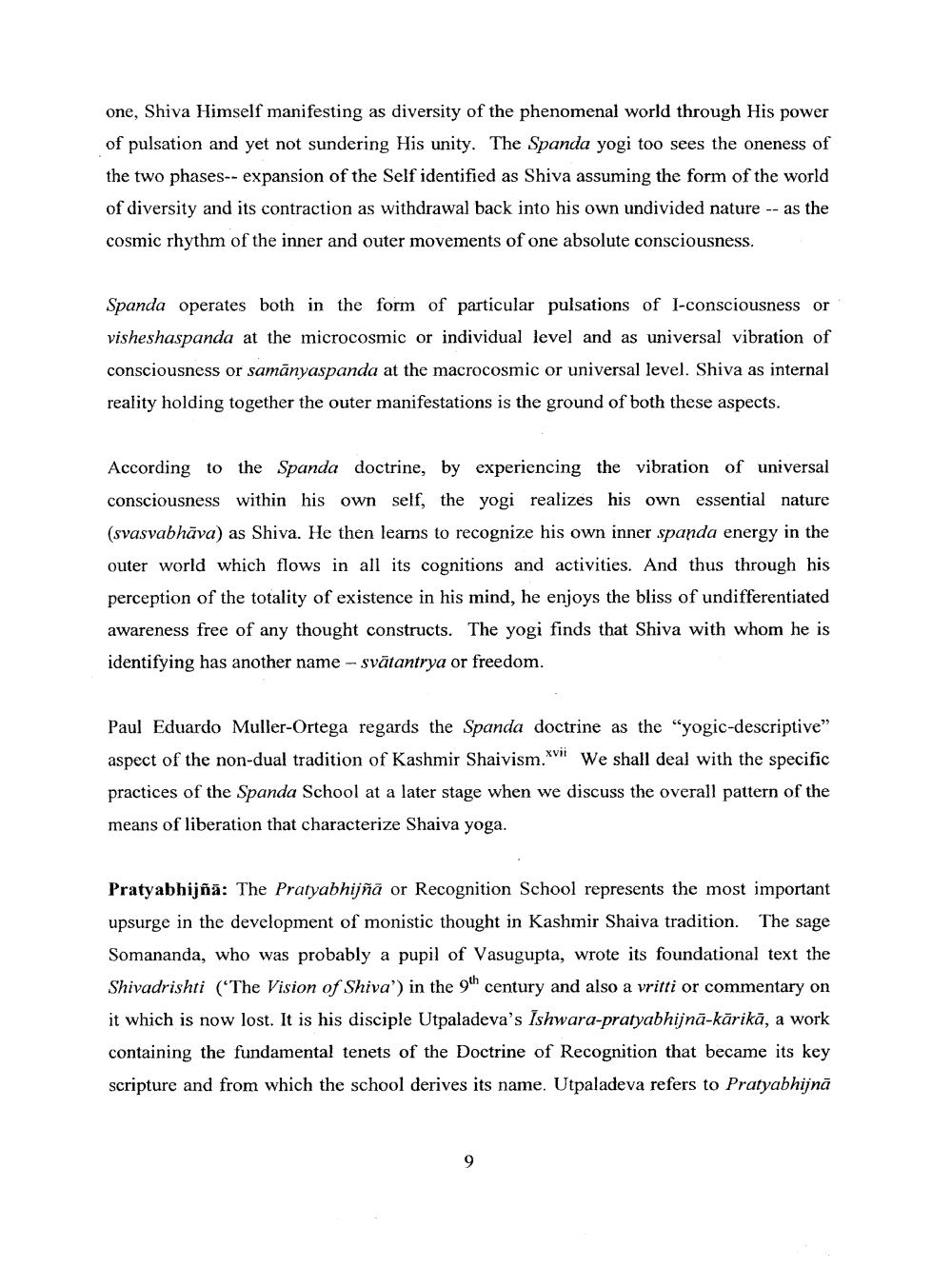Book Title: Yoga of Synthesis in Kashmir Shaivam Author(s): S S Toshkhani Publisher: S S Toshkhani View full book textPage 9
________________ one, Shiva Himself manifesting as diversity of the phenomenal world through His power of pulsation and yet not sundering His unity. The Spanda yogi too sees the oneness of the two phases-- expansion of the Self identified as Shiva assuming the form of the world of diversity and its contraction as withdrawal back into his own undivided nature -- as the cosmic rhythm of the inner and outer movements of one absolute consciousness. Spanda operates both in the form of particular pulsations of l-consciousness or visheshaspanda at the microcosmic or individual level and as universal vibration of consciousness or samānyaspanda at the macrocosmic or universal level. Shiva as internal reality holding together the outer manifestations is the ground of both these aspects. According to the Spanda doctrine, by experiencing the vibration of universal consciousness within his own self, the yogi realizes his own essential nature (svasvabhāva) as Shiva. He then learns to recognize his own inner spanda energy in the outer world which flows in all its cognitions and activities. And thus through his perception of the totality of existence in his mind, he enjoys the bliss of undifferentiated awareness free of any thought constructs. The yogi finds that Shiva with whom he is identifying has another name - svātantrya or freedom. Paul Eduardo Muller-Ortega regards the Spanda doctrine as the "yogic-descriptive” aspect of the non-dual tradition of Kashmir Shaivism. We shall deal with the specific practices of the Spanda School at a later stage when we discuss the overall pattern of the means of liberation that characterize Shaiva yoga. Pratyabhijñā: The Pratyabhijñā or Recognition School represents the most important upsurge in the development of monistic thought in Kashmir Shaiva tradition. The sage Somananda, who was probably a pupil of Vasugupta, wrote its foundational text the Shivadrishti ('The Vision of Shiva') in the 9th century and also a vritti or commentary on it which is now lost. It is his disciple Utpaladeva's Ishwara-pratyabhijnā-kārikā, a work containing the fundamental tenets of the Doctrine of Recognition that became its key scripture and from which the school derives its name. Utpaladeva refers to PratyabhijnāPage Navigation
1 ... 7 8 9 10 11 12 13 14 15 16 17 18 19 20 21 22 23 24 25 26 27 28 29 30 31 32 33 34 35 36 37 38 39 40 41 42 43 44 45 46
